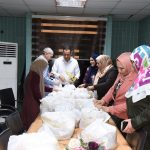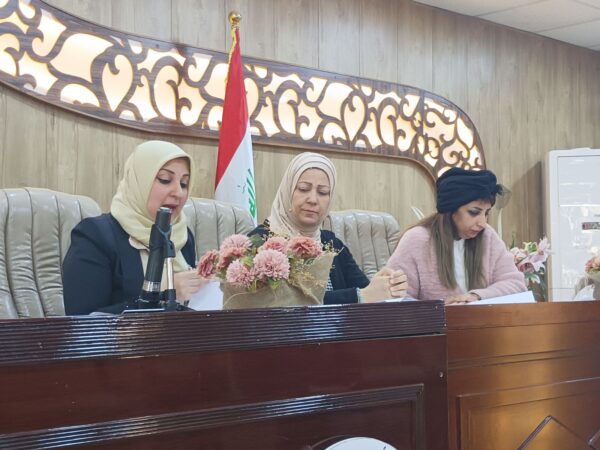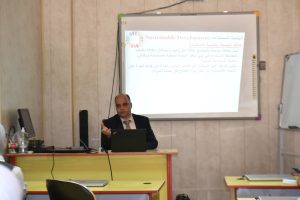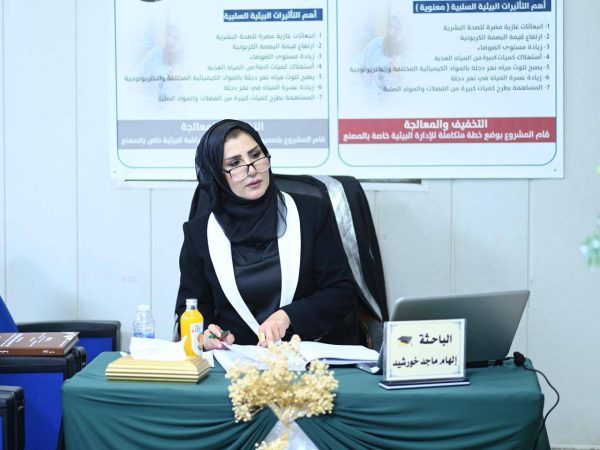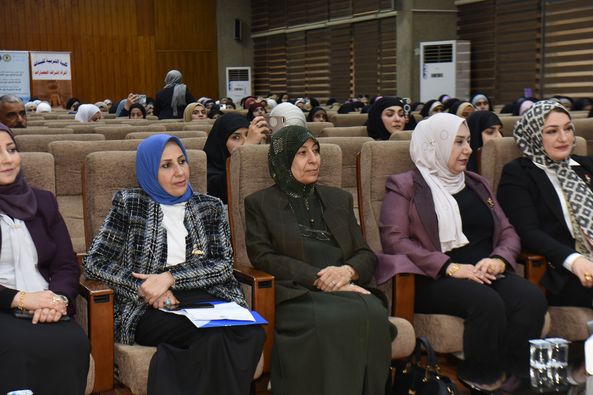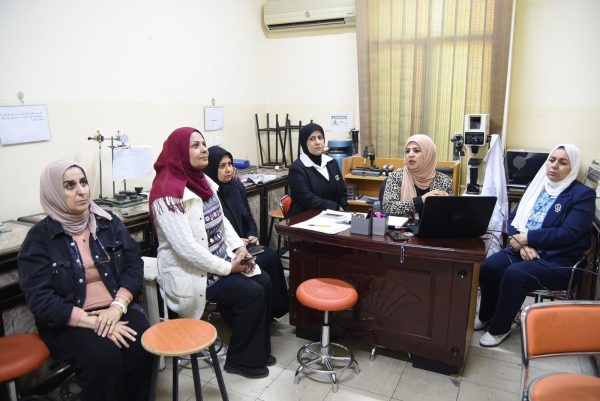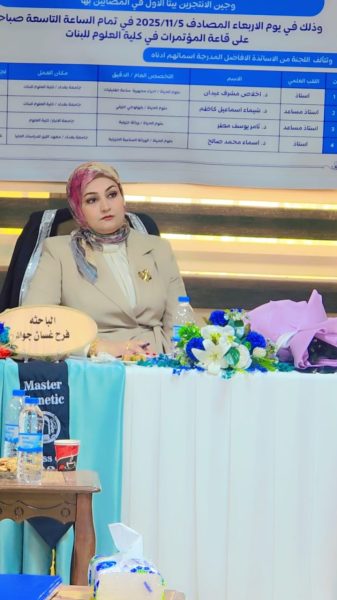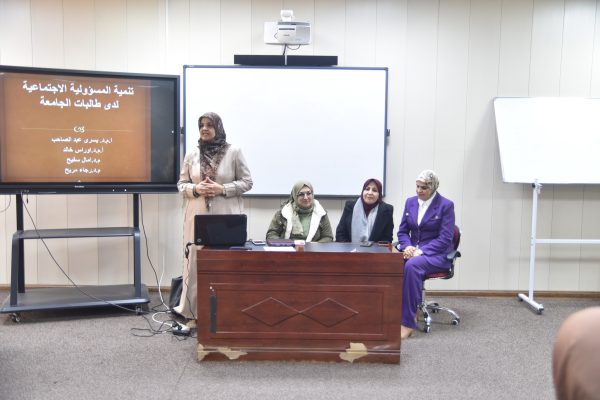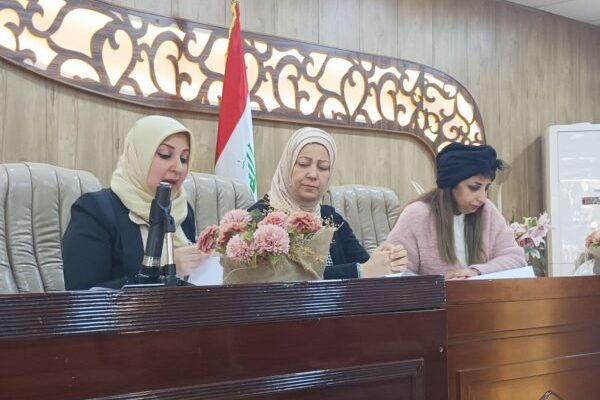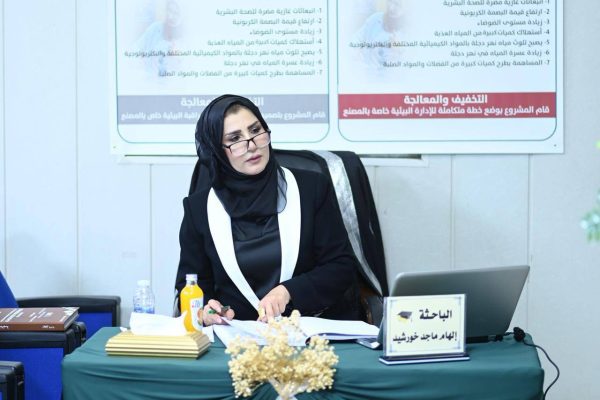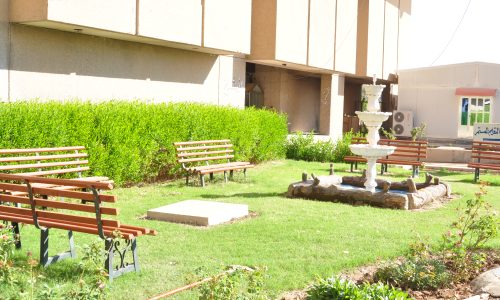
There has become a growing interest in the so-called sustainable development, which aims to find a balance between the economic system without depleting natural resources, taking into account environmental security, and since there is a human dimension of sustainable development inherent in the environmental dimension, these generations have become responsible for preserving natural resources for future generations. Therefore, attention must be paid to the environment as the basis of development, as the waste and depletion of natural human resources, which are the basis of any agricultural or artificial activity, will have harmful effects on development in general.
The concept of sustainable development emerged as a result of the neglect of development of the environmental aspects, so it was necessary to find a new development philosophy that helps overcome problems, and international efforts resulted in a new concept of development known as (sustainable development) and this concept was crystallized for the first time in the report of the World Commission on Environment and Development, which bears the title of our common future and published for the first time in 1987.
-
Implementing programs that contribute to achieving some of the UNDP goals for sustainable development.
-
It encourages students and associates to improve environmental sustainability by developing best practices because they are the group on which to build the future and maintain sustainability.
-
Focusing on scientific projects and research and activating their outputs to formulate successful programs with regard to preserving the environment, as well as teaching scientific courses related to the environment and climate because of its role in building a future generation of researchers and workers in the field of environmental sciences.
-
Focusing on the importance of education in instilling positive and constructive ideas to protect the environment because a sustainable environment is an integral part of the requirements of a decent life for humans and ensuring the future of future generations. It is also a basic constituent and a national and humanitarian duty for the quality of life and a necessity to reduce pollution levels in the environment.
Activities and scientific contributions of the College of Science for Girls within the goals of development and sustainability

No Poverty
First Goal
Introduction
Globally, the number of people living in extreme poverty fell from 36 per cent in 1990 to 10 per cent in 2015. But the pace of change is slowing, and the COVID-19 crisis risks reversing decades of progress in the fight against poverty. New research published by the United Nations University’s Global Institute for Development Economics Research warns of the economic fallout from the global pandemic, which could increase global poverty by up to half a billion people, or 8% of the total population. source
Activities
Zero Hunger
Second Goal
Introduction
After decades of steady decline, the number of people suffering from hunger – measured by the prevalence of undernourishment – began to increase slowly again in 2015. Today, more than 820 million people are used to going to bed hungry, of whom about 135 million are suffering from acute hunger due to man-made conflicts, climate change and largely economic depression. source
Activities
Good Health and Well-being
Third Goal
Introduction
Ensuring healthy lives and promoting a decent life at all ages is key to achieving sustainable development.
The world is currently facing an unprecedented global health crisis – due to COVID-19, human suffering is rampant, the global economy is being destabilized, and the lives of billions of people around the world are being turned upside down.source
Activities
Quality Education
Fourth Goal
Introduction
Education enables upward socioeconomic mobility and is an important means of escaping poverty. Over the past decade, significant progress has been made towards facilitating access to education and enrolment rates at all levels, especially for girls. However, some 260 million children were still out of school in 2018 – – making up nearly a fifth of the world’s population in this age group. In addition, more than half of children and adolescents worldwide do not meet minimum standards of proficiency in reading and mathematics. source
Activities
Gender Equality
الهدف الخامس
Introduction
Gender equality is not just a fundamental human right, but a necessary foundation for a peaceful, prosperous and sustainable world. There has been progress over the past decades: more girls are going to school, fewer girls are forced into early marriage, more women are serving in parliament and in leadership positions, and laws are being reformed to promote gender equality. source
Activities
Clean Water and Sanitation
Sixth Goal
Introduction
While significant progress has been made in increasing access to clean drinking water and sanitation, billions of people – mostly in rural areas – still lack access to these basic services. Globally, one in three people do not have access to safe drinking water, two in five people do not have any basic facilities for washing hands with soap and water, and more than 673 million people practice open defecation. source
Activities
Affordable and Clean Energy
Seventh Goal
Introduction
The world is making progress towards Goal 7, with encouraging signs that energy is becoming more sustainable and widely available. Access to electricity has begun to accelerate in poor countries, energy efficiency continues to improve, and renewable energy is making impressive gains in the electricity sector. source
Activities
Decent Work and Economic Growth
Eighth Goal
Introduction
Sustainable and inclusive economic growth can drive progress, create decent jobs for all, and improve living standards. COVID-19 has disrupted billions of people and put the global economy at risk. The IMF predicts a bad global recession like the 2009 recession or worse. As job losses increase, the ILO estimates that nearly half of the global workforce is at risk of losing their livelihoods. source
Activities
Industry, Innovation and Infrastructure
Ninth Goal
Introduction
A comprehensive and sustainable orientation towards industrialization, combined with innovation and infrastructure, can unleash dynamic and competitive economic forces that generate jobs and income, while playing a key role in introducing and promoting new technologies, facilitating international trade, and enabling the efficient use of resources. source
Activities
Reduced Inequalities
Tenth Goal
Introduction
Reducing inequalities and ensuring no one is left behind is integral to achieving the Sustainable Development Goals.
Disparities within and among States are a constant cause for concern. Despite some positive signs of a trend towards reducing inequality in some dimensions, such as reducing relative income inequality in some countries and benefiting low-income countries through preferential trade, inequality persists. source
Activities
Sustainable Cities and Communities
Eleventh Goal
Introduction
Urbanization is increasing in the world. Since 2007, more than half of the world’s population has lived in cities, and this proportion is expected to rise to 60 per cent by 2030. Cities and urban areas are strengths of economic growth – contributing about 60 percent of global GDP. However, they are also responsible for about 70 percent of global carbon emissions and more than 60 percent of resource use.Source
Activities
Responsible Consumption and Production
Twelfth Goal
Climate Action
Thirteenth Goal
Life Below Water
Fourteenth Goal
Introduction
The nature of the oceans involves global systems that make the Earth habitable for humans, providing and regulating rainwater, drinking water, weather, climate, coasts, much of our food and even oxygen in the air we breathe through the seas. source
Life on Land
Fifteenth Goal
Introduction
Nature is very important for our survival: nature provides us with oxygen, regulates weather patterns, pollinates our crops, and produces food, fodder and fiber. But nature is under increasing pressure. Human activity has changed about 75 percent of the Earth’s surface, putting pressure on wildlife and nature into a decreasing corner of the planet. source
Peace, Justice and Strong Institutions
Sixteenth Goal
Partnerships for the Goals
Seventeenth Goal
Introduction
The SDGs can only be achieved through strong global partnerships and collaboration.
A successful development agenda requires inclusive partnerships – at global, regional, national and local levels – based on principles and values, and on a shared vision and shared goals that put people and planet at the centre of their concern. Many countries need official development assistance to encourage growth and trade. However, aid levels were falling and donor States had not fulfilled their pledge to increase financing for development. source
Activities
Latest activities and scientific contributions


